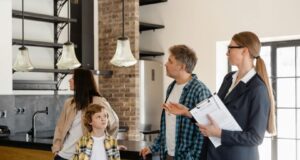5 Conditions That Can Impact Your Metal Roof
Metal roofing is expensive, but this leads to several homeowners thinking that nothing could go wrong with it. However, metal roofing is prone to wear and tear as well, and certain conditions can accelerate the process.
In this comprehensive post, you can get to know about the conditions that can impact your metal roof in detail. So, read on and increase your awareness.
- Leaking
Sometimes, a leaky metal roof is a result of situations such as:
- Melting snow
- Heavy rain
- Structural issues
- Wind
- Ice damming, i.e., ice that consistently freezes and thaws
These situations are almost always inevitable and are beyond anyone’s control. However, leaky metal roofs may also be the result of installation problems like:
- Improper seaming of the side rib, which requires multiple panels to be connected properly
- Excessively loose or tight screws create open spots and allow entry of water
- Incorrect application or missing butyl tape or sealant
- Inadequate flashing, i.e. material for prevention of moisture entry
The best way to avoid these problems is to hire a reputed contractor for metal roof installation.
- Stress Wrinkling
Stress wrinkling, also known as elastic buckling and oil canning, refers to the visually apparent waviness in metal roofing’s flat portions. Metal roofing featuring materials such as copper, zinc, aluminum, and steel is prone to this issue.
While stress wrinkling is natural for most metal walls and roofs, it is complex in terms of measurement and definition. Factors that are likely to contribute to stress wrinkling include:
- Regular exposure to stress owing to roll-forming panels and coil cutting
- Application of high pressure during metal coiling
- Insufficient allocation of space for panel contraction and thermal expansion
- Installers’ failure to store, handle or use the metal panels
- Alterations in the original form of the metal panel structure that triggers movement or stress
If your metal roofing is suffering from stress wrinkling, you may be wondering “Who do I approach for metal roof repair near me?” The answer lies in Advance Roofing. It is a company that specializes in metal roofing services.
You could also avoid stress wrinkling by exploring the following ways:
- Buying thick metals
- Picking low-reflectivity metals for making stress wrinkling less visually apparent
- Breaking up a panel’s flat space through rib roller use
- Purchasing a stretched or tension-leveled material
- Corrosion
Metal roofing offers substantial resistance against corrosion. However, it is not corrosion-proof. It is prone to particular types of corrosion such as:
- Saltwater corrosion, is a common phenomenon across buildings and homes located on the coastline. If your home is close to the sea, investing in either zinc or aluminum would make the most sense.
- Underside corrosion is typically a result of improper coating on the metal panel’s underside. This is also a possibility if granulated underlayments are used.
- Cut edge rusting, which involves minimal corrosion on steel roofs’ cut edges that are prone to edge creep. Contractors often turn to paint pens, hemming exposed edges, or lap flashing to prevent this from happening.
- Corrosion stems from the combination of dissimilar materials and metals.
- Scratching and Scuffing
Scratching and scuffing are things that may happen to metal roofing without warning. Risks of these occurrences tend to increase in the following circumstances:
- Lack of edge guards, which can help protect sheet edges during shipping
- Improper coiling of metals, which may lead to the protective coating being stripped
- Lack of lifting device used by carriers when it comes to handling metal coiling
- Tools that are dropped on roofing panels or rubbed against them
- Technical failures in roll-forming machines’ components
If the scratching and scuffing are not very serious, a paint job should be enough to fix them. However, if they are severe, i.e. going down to the material’s core, it would be best to pursue a replacement.
- Fading and Chalking
Fading occurs when the paint applied to metal roofing breaks down owing to prolonged exposure to pollution, UV rays, and chemicals. More often than not, this exposure is uneven, which leads to uneven fading.
Chalking is the appearance of a whitish residue on roofing panels. It is a result of the breaking down of the paint’s resin due to exposure to UV rays. Reputed metal roofing manufacturers provide paint warranties, which are helpful for homeowners to seek replacements for faded and/or chalked panels.















